State professional educational institution
«Vorkuta Polytecnical School»
Welding History - A Story of Harnessing Heat
(part 1)
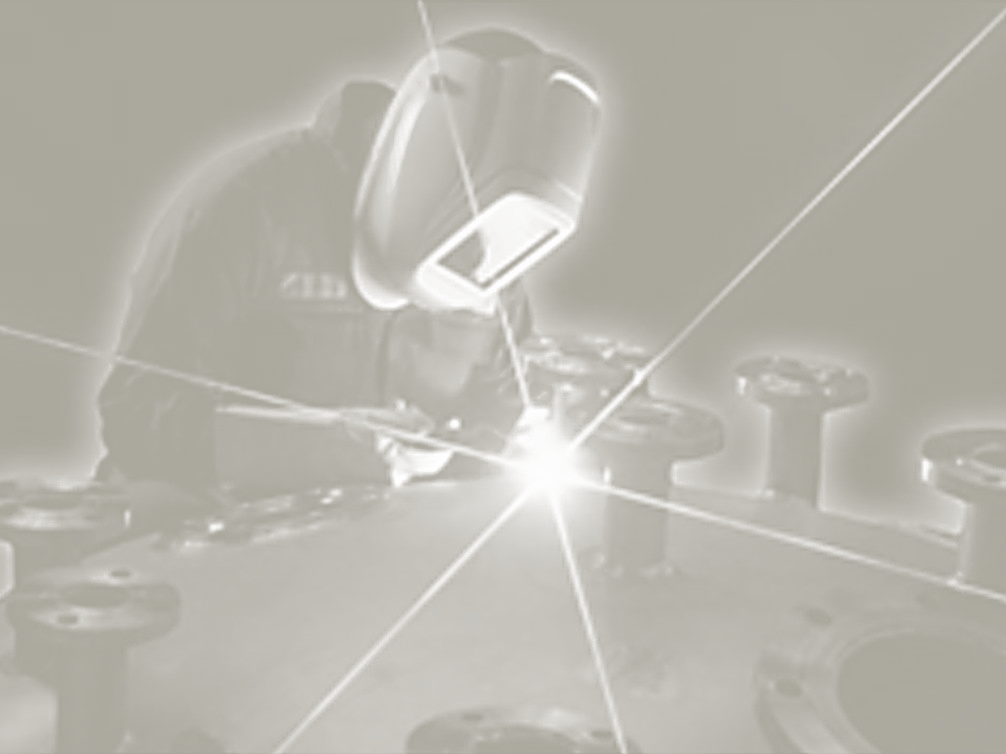
Vocabulary
forge - выковывать, ковать
oxyacetylene - 1) автогенный 2) кислородно-ацетиленовый
porosity - пористость
brittleness - хрупкость
shielding gas - защитный газ
welding rod - сварочный пруток
MIG metal inert gas welding - сварка металлическим электродом в инертном газе
torch - горелка
molten pool/puddle - сварочная ванна, ванна жидкого металла
impurities – примеси
harnessing heat – использование тепла
Iron pillar – зд. Жлезный столб
Delhi |ˈdɛli| - Дели
AD - Anno Domini — латинское выражение, означающее время (годы, века) нашей эры
metric ton - общ. метрическая тонна (1000 кг)
forge welding – кузнечная сварка
blacksmith |ˈblaksmɪθ| - кузнец
pound |paʊnd| - стучать, заключать, запирать, загонять
bond |bɒnd| - связывать, скреплять
Vannoccio Biringuccio - Ванноччо Бирингуччо (20 октября 1480, Сиена — 30 апреля 1539, Рим) — итальянский алхимик, металлург и архитектор
release - освобождать, высвобождать, отпускать, выпускать
De la pirotechnia – книга «Пиротехника» (1540)
renaissance |rɪˈneɪs(ə)ns| - эпоха Возрождения
craftsman |ˈkrɑːf(t)smən| - ремесленник, художник, искусный мастер
during |ˈdjʊərɪŋ| - во время, в течение, в процессе, в продолжение
invent |ɪnˈvɛnt| - изобретать
electric arc – электрическая дуга
advance |ədˈvɑːns| - прогресс; успех; улучшение
acetylene |əˈsetəliːn| - ацетилен
suitable |ˈsuːtəbl| - подходящий, соответствующий, годный
blowtorch |ˈbləʊtɔːtʃ| - паяльная лампа
develop |dɪˈveləp| - развивать, разрабатывать
oxyfuel welding |ˈɒksiˈfjuːəl| - кислородная сварка
fall out of favor - утратить популярность, впасть в немилость
industrial applications - промышленное использование
arc welding - электродуговая сварка
metal covering - металлическое покрытие; металлическая обшивка
known as flux - известный как сварочный флюс
Benardos - Никола́й Никола́евич Бенардо́с (изобретатель электрической дуговой сварки (1881), точечной и шовной контактной сварки)
moderately |ˈmɒd(ə)rətli| - умеренно
consumable |kənˈsjuːməb(ə)l| - потребляемый, расходуемый
carbon electrode - угольный электрод
a rod - пруток для сварки
termite welding |ˈtəːmaɪt| - тепловая сварка
coated metal electrode – металлопокрытый электрод
stable |ˈsteɪbl| - стабильный, устойчивый
current welding - сварка током
decade |ˈdekeɪd| - десятилетие
resistance welding - контактная электросварка
patent |ˈpætnt| - патент
ESAB - шведская промышленная компания по производству и поставке сварочных материалов
covered electrode - сварочный электрод с обмазкой
strong – зд. крепкий, прочный
weld - сварной шов
welding processes – сварочные процессы
major surge - большой рост
military powers attempting - попытки военных держав
welded hull - цельносварной корпус
hesitant |ˈhezɪtənt| - колеблющийся, сомневающийся; нерешительный
fuselage |ˈfjuːsəlɑːʒ| - фюзеляж
automatic welding - автоматическая сварка
shielding gas - защитный газ
oxygen |ˈɒksɪdʒ(ə)n| - кислород, кислородный
nitrogen |ˈnaɪtrədʒən| - азот, азотный
porosity |pɔːˈrɒsəti| and brittleness - пористость и хрупкость
hydrogen |ˈhaɪdrədʒən| - водород
argon |ˈɑːɡɒn| - аргон
helium |ˈhiːlɪəm| - гелий
welding atmosphere - среда в зоне сварки
aluminum |əˈluːmənəm| - алюминиевый, алюминий
magnesium |maɡˈniːzɪəm| - магний
conjunction |kənˈdʒʌŋkʃn| - соединение, связь
development |dɪˈveləpmənt| - развитие, рост; совершенствование
alternating current — переменный ток
significant invention - важное изобретение
atomic hydrogen welding - атомно-водородная сварка
MIG welding - сварка в полуавтоматическом режиме
Union Carbide Corporation - американская химическая компания «Юнион карбайд»
TIG (Tungsten Insert Gas) process - сваривание деталей производится в среде защитного газа (в частности аргона) неплавящимся электродом
"Heliarc" - дуговая сварка в среде гелия
molten puddle |ˈmoʊltən| |ˈpʌdl| - сварочная ванночка (расплавленный металл в зоне сварочной дуги)
TIG torches - горелка для сварки вольфрамовым электродом
The Linde Group — немецкая транснациональная химическая компания
flux-cored arc welding - дуговая сварка с флюсом
plasma arc welding - плазменно-дуговая сварка
electroslag welding - электрошлаковая сварка
electrogas welding - электрогазовая сварка
breakthrough |ˈbreɪkθruː| - прорыв, достижение, открытие
electron beam welding - электронно-лучевая сварка
deep and narrow welding – глубокое и узкое проплавление
concentrated heat source – концентрированный источник тепла
laser beam welding - сварка лазерным лучом
due the high cost - из-за высокой стоимости
application |ˌæplɪˈkeɪʃn| - применение, приложение; использование
Task 1: Read the text and translate it.
Welding History - A Story of Harnessing Heat
J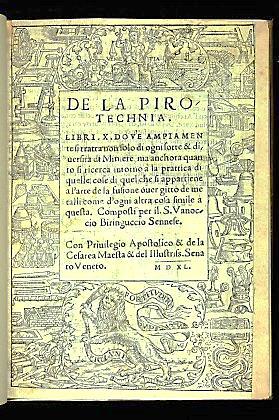 oining metal and welding history go back several millennia starting in the Bronze Age then Iron Age in Europe then the Middle East. Welding was used in the Iron pillar in Delhi, India, about 310 AD, weighing 5.4 metric tons. The Middle Ages brought forge welding, blacksmiths pounded hot metal until it bonded. In 1540, Vannoccio Biringuccio released De la pirotechnia, which includes descriptions of the forging operation. Renaissance craftsmen gained skilled in the process, and the welding continued to grow during the following centuries.
oining metal and welding history go back several millennia starting in the Bronze Age then Iron Age in Europe then the Middle East. Welding was used in the Iron pillar in Delhi, India, about 310 AD, weighing 5.4 metric tons. The Middle Ages brought forge welding, blacksmiths pounded hot metal until it bonded. In 1540, Vannoccio Biringuccio released De la pirotechnia, which includes descriptions of the forging operation. Renaissance craftsmen gained skilled in the process, and the welding continued to grow during the following centuries.
Welding was transformed during the 19th century. In 1800, Sir Humphrey Davy invented the electric arc, and advances in welding continued with the metal electrode by a Russian, Nikolai Slavyanov, and an American, C.L. Coffin late in the 1800s.
Acetylene was discovered in 1836 by Edmund Davy, but was not practical in welding until about 1900, when a suitable blowtorch was developed. At first, oxyfuel welding was the more popular welding method due to its portability and relatively low cost. As the 20th century progressed, it fell out of favor for industrial applications. It was largely replaced with arc welding, as metal coverings (known as flux) for the electrode that stabilize the arc and shield the base material from impurities continued to be developed.
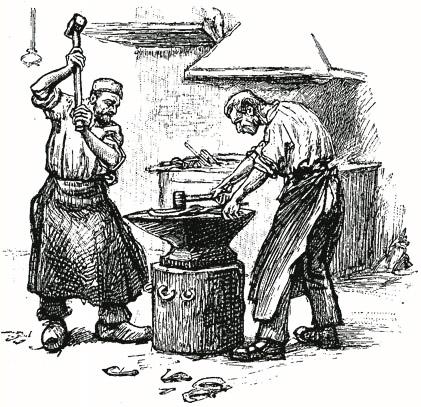 In 1881 a Russian inventor, Benardos demonstrated the carbon electrode welding process. An arc was formed between a moderately consumable carbon electrode and the work. A rod was added to provide needed extra metal.
In 1881 a Russian inventor, Benardos demonstrated the carbon electrode welding process. An arc was formed between a moderately consumable carbon electrode and the work. A rod was added to provide needed extra metal.
Termite welding was invented in 1893, another process, oxyfuel welding, became well established.
Around 1900, A. P. Strohmenger brought a coated metal electrode in Britain, which had a more stable arc, and in 1919, alternating current welding was invented by C.J. Holslag, but did not become popular for another decade.
Resistance welding was developed during the end of the 19th century, with the first patents going to Elihu Thompson in 1885, and he produced advances over the next 15 years.
In 1904 Oscar Kjellberg in Sweden, who started ESAB, invented and patented the covered electrode. This electric welding process made strong welds of excellent quality.
World War I caused a major surge in the use of welding processes, with the various military powers attempting to determine which of the several new welding processes would be best. The British primarily used arc welding, even constructing a ship, the Fulagar, with an entirely welded hull. The Americans were more hesitant, but began to recognize the benefits of arc welding when the process allowed them to repair their ships quickly after a German attack in the New York Harbor at the beginning of the war. Arc welding was first applied to aircraft during the war as well, as some German airplane fuselages were constructed using the process.
During the 1920s, major advances were made in welding technology, including the introduction of automatic welding in 1920, in which electrode wire was fed continuously.
Shielding gas became a subject receiving much attention, as scientists attempted to protect welds from the effects of oxygen and nitrogen in the atmosphere. Porosity and brittleness were the primary problems, and the solutions that developed included the use of hydrogen, argon, and helium as welding atmospheres.
During the following decade, further advances allowed for the welding of reactive metals like aluminum and magnesium. This, in conjunction with developments in automatic welding, alternating current, and fluxes fed a major expansion of arc welding during the 1930s and then during World War II.
A significant invention was defined in a patent by Alexander, filed in December 1924, and became known as the Atomic Hydrogen Welding Process. It looks like MIG welding but hydrogen is used as the shielding gas which also provides extra heat. A major innovation was described in a patent that defines the Submerged Arc Process by Jones, Kennedy and Rothermund. This patent was filed in October 1935 and assigned to Union Carbide Corporation.
Russell Meredith working at Northrop Aircraft Company in 1939-1941 invented the TIG process. This new process was called "Heliarc" as it used an electric arc to melt the base material and helium to shield the molten puddle. Mr.Jack Northrop's dream was to build a magnesium airframe for a lighter, faster warplanes and his welding group invented the process and developed the first TIG torches. The patents were sold to Linde who developed a number of torches for different applications. They also developed procedures for using Argon which was more available and less expensive than Helium.
In 1957, the flux-cored arc welding process debuted, in which the self-shielded wire electrode could be used with automatic equipment, resulting in greatly increased welding speeds, and that same year, plasma arc welding was invented. Electroslag welding was released in 1958, and it was followed by its cousin, electrogas welding, in 1961.
Other recent developments in welding include the 1958 breakthrough of electron beam welding, making deep and narrow welding possible through the concentrated heat source. Following the invention of the laser in 1960, laser beam welding debuted several decades later, and has proved to be especially useful in high-speed, automated welding. Both of these processes, however, continue to be quite expensive due the high cost of the necessary equipment, and this has limited their applications.
Task 2: Find equivalents for the following words combinations in the text.
Tорговое судоходство, открытая печь, военный самолёт, открытый горн, источник тепла, признавать преимущества, высокая стоимость, приводить к увеличению скорости сварки, оказаться особенно полезным.
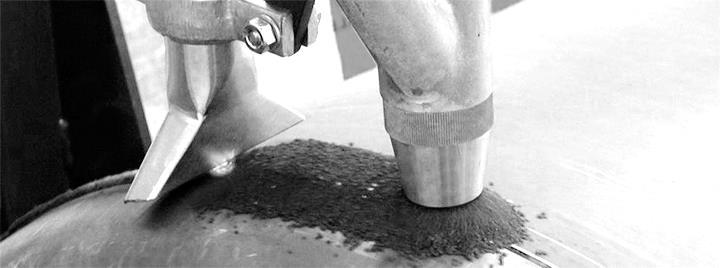
Task 3: Fill in the table with the scientists’ names and their inventions from the lists below.
Scientists: Edmund Davy; A. P. Strohmenger; Jones, Kennedy and Rothermund; Benardos; C.J. Holslag; Oscar Kjellberg; Alexander; Nikolai Slavyanov and C.L. Coffin.
Inventions: discovered acetylene; invented the electric arc; developed metal electrode; brought a coated metal electrode; invented and patented the covered electrode; invented alternating current; developed Submerged Arc Welding; patented Atomic Hydrogen Welding process.
| Date | Scientist | Invention |
| 1540 | Vannoccio Biringuccio | described forging operation |
| 1800 | Sir Humphrey Davy |
|
| 1800s. |
|
|
| 1836 |
|
|
| 1881 |
| demonstrated the welding process with carbon electrode |
| 1900 |
|
|
| 1904 |
|
|
| 1919 |
|
|
| 1935 |
|
|
| 1924 |
|
|
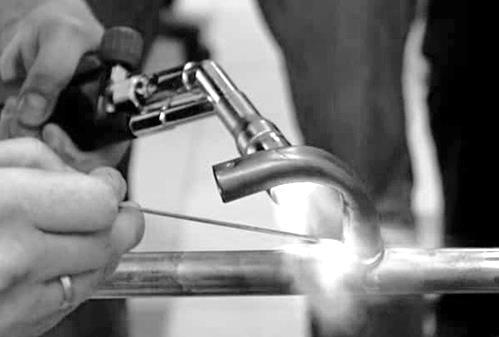
Task 4: Say if the following is true or false. Correct the false statements.
1. Arc welding was used to build the Iron pillar in Delhi, India.
2. The discovery of acetylene made it possible to achieve higher heating temperatures.
3. The first electrode used in welding was a covered one.
4. Oxygen is used as shielding gas in TIG welding.
5. The TIG process made it possible to construct planes faster.
Task 5: Answer the following question on the text.
1. Which process was developed earlier, MIG or TIG?
2. Why is rod added in carbon electrode welding?
3. What is the difference between the Atomic Hydrogen Welding process and the MIG process?
4. What kind of gas was first used to shield the molten puddle?
5. Is tungsten electrode consumable?
Task 6: Translate the following sentences from Russian into English.
1. Ковка – первый в истории метод соединения металлов, при котором
было необходимо нагреть соединяемые металлы до высокой температуры на открытом пламени.
2. Открытие ацетилена и соединение его с кислородом позволило
значительно повысить температуру нагрева свариваемых металлов.
3. Российский изобретатель Бенардос впервые использовал неплавящийся угольный электрод.
4. Использование электрода с покрытием значительно повысило качество получаемых сварных соединений.
5. Изобретение дуговой сварки под флюсом позволило ускорить строительство торговых судов.
6. При дуговой сварке вольфрамовым электродом в качестве инертного газа использовался гелий, который позднее был заменён более дешёвым в получении аргоном.
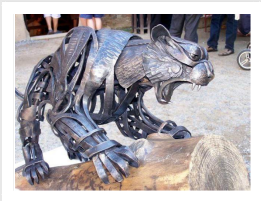





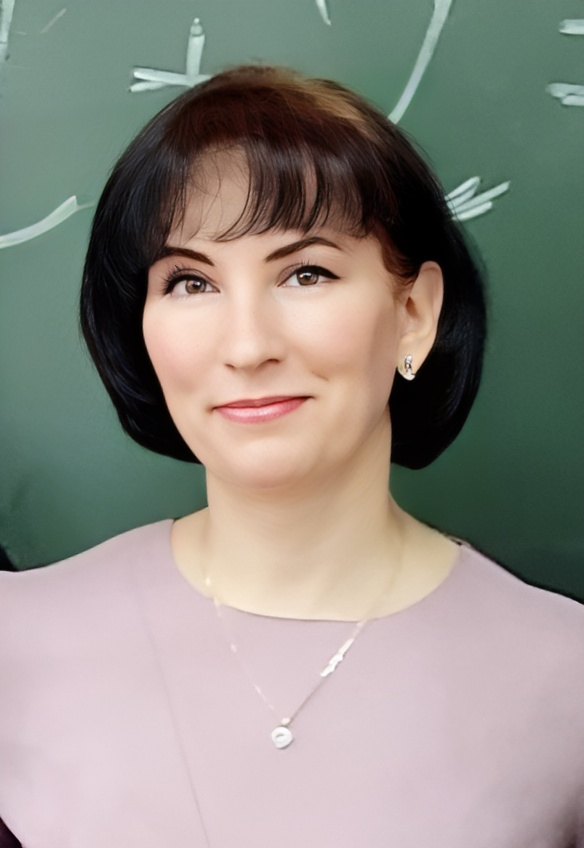


 oining metal and welding history go back several millennia starting in the Bronze Age then Iron Age in Europe then the Middle East. Welding was used in the Iron pillar in Delhi, India, about 310 AD, weighing 5.4 metric tons. The Middle Ages brought forge welding, blacksmiths pounded hot metal until it bonded. In 1540, Vannoccio Biringuccio released De la pirotechnia, which includes descriptions of the forging operation. Renaissance craftsmen gained skilled in the process, and the welding continued to grow during the following centuries.
oining metal and welding history go back several millennia starting in the Bronze Age then Iron Age in Europe then the Middle East. Welding was used in the Iron pillar in Delhi, India, about 310 AD, weighing 5.4 metric tons. The Middle Ages brought forge welding, blacksmiths pounded hot metal until it bonded. In 1540, Vannoccio Biringuccio released De la pirotechnia, which includes descriptions of the forging operation. Renaissance craftsmen gained skilled in the process, and the welding continued to grow during the following centuries.  In 1881 a Russian inventor, Benardos demonstrated the carbon electrode welding process. An arc was formed between a moderately consumable carbon electrode and the work. A rod was added to provide needed extra metal.
In 1881 a Russian inventor, Benardos demonstrated the carbon electrode welding process. An arc was formed between a moderately consumable carbon electrode and the work. A rod was added to provide needed extra metal. 












